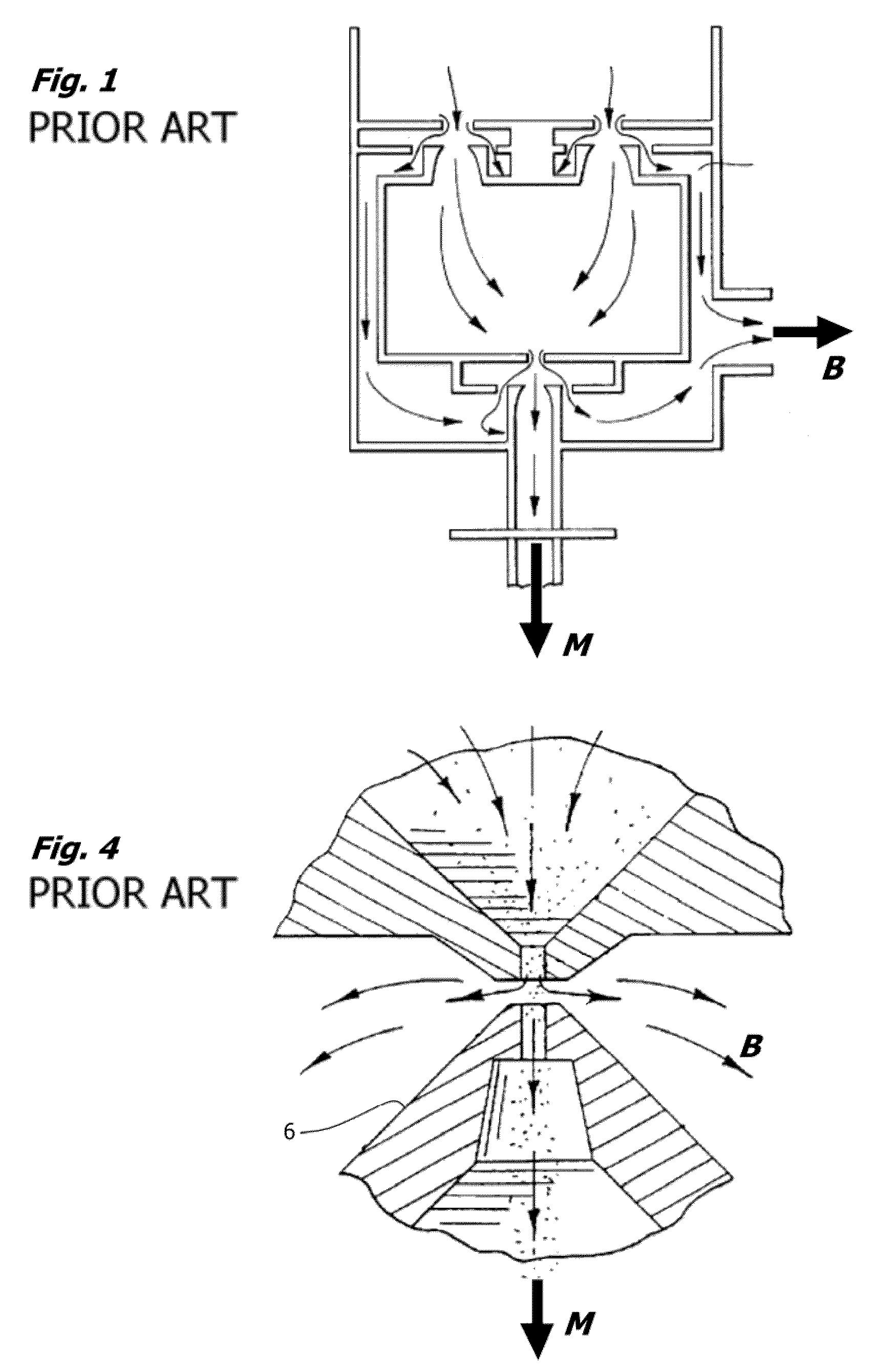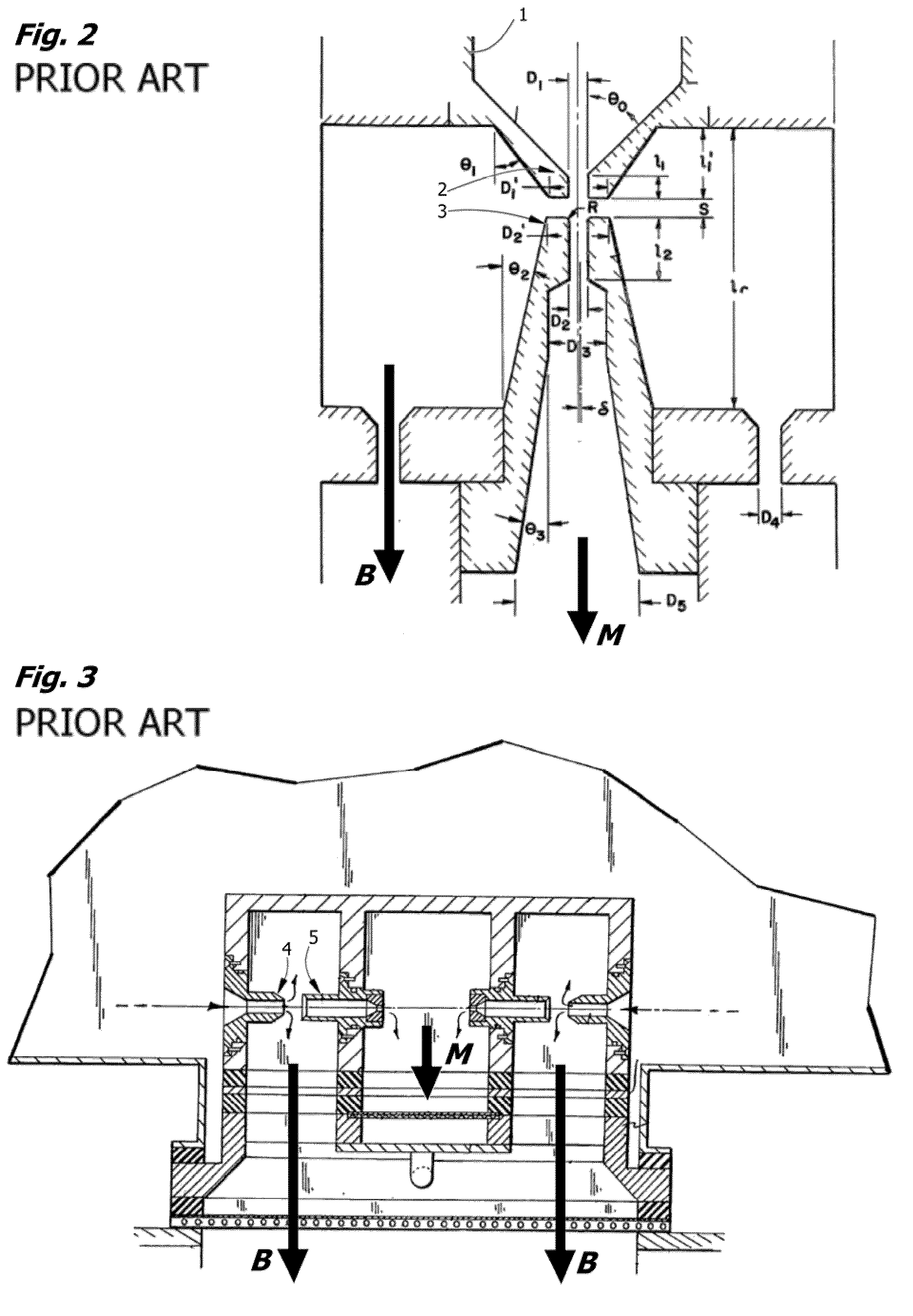Skimmer for concentrating an aerosol
a technology of aerosol and concentrater, which is applied in the direction of dispersed particle separation, separation process, instruments, etc., can solve the problems of high concentration of aerosol, low concentration of concentrated aerosol, and ineffective focusing devices in separating the particle-rich core from the particle-depleted sheath flow, so as to improve the recovery effect of particl
- Summary
- Abstract
- Description
- Claims
- Application Information
AI Technical Summary
Benefits of technology
Problems solved by technology
Method used
Image
Examples
Embodiment Construction
[0052]Although the following detailed description contains many specific details for the purposes of illustration, anyone of ordinary skill in the art will appreciate that many variations and alterations to the following details are within the scope of the invention. Accordingly, the exemplary embodiments of the invention described below are set forth without any loss of generality to, and without imposing limitations upon, the claimed invention.
[0053]Throughout the present description, the terms “upstream” and “downstream” are used to refer to an orientation in respect to the direction of the gas stream flow from the inlet of the device to the outlet of the device on its long axis of flow. A nozzle or aerodynamic lens, for example, is typically placed upstream of a skimmer. An upstream wall of a lateral flow channel faces the outlet, and so forth. Similarly, “anterior” refers to an aspect or member in proximity to or in the direction of the inlet and “posterior” to an aspect or mem...
PUM
| Property | Measurement | Unit |
|---|---|---|
| width | aaaaa | aaaaa |
| width | aaaaa | aaaaa |
| diameter | aaaaa | aaaaa |
Abstract
Description
Claims
Application Information
 Login to View More
Login to View More - R&D
- Intellectual Property
- Life Sciences
- Materials
- Tech Scout
- Unparalleled Data Quality
- Higher Quality Content
- 60% Fewer Hallucinations
Browse by: Latest US Patents, China's latest patents, Technical Efficacy Thesaurus, Application Domain, Technology Topic, Popular Technical Reports.
© 2025 PatSnap. All rights reserved.Legal|Privacy policy|Modern Slavery Act Transparency Statement|Sitemap|About US| Contact US: help@patsnap.com



